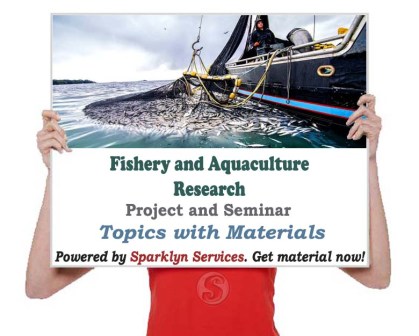1.0 Introduction
1.1 Background To The Study
Fresh fish rapidly deteriorates unless some way can be found to preserve it. Drying is a method of food preservation that works by removing water from the food, which inhibits the growth of microorganisms. Open air drying using sun and wind has been practiced since ancient times to preserve food. Water is usually removed by evaporation (air drying, sun drying, smoking or wind drying) but, in the case of freeze-drying, food is first frozen and then the water is removed by sublimation. Bacteria, yeasts and molds need the water in the food to grow, and drying effectively prevents them from surviving in the food.
Fish are preserved through such traditional methods as drying, smoking and salting. The oldest traditional way of preserving fish was to let the wind and sun dries it (Wikipedia, 2016). Drying food is the world’s oldest known preservation method, and dried fish has a storage life of several years. The method is cheap and effective in suitable climates; the work can be done by the fisherman and family, and the resulting product is easily transported to market (Wikipedia, 2016). Any kind of fish can be smoked or dried. There are three main methods of smoking: Smoking and roasting; Hot smoking; and Long smoking Smoking and roasting is a simple method of preservation, for consumption either directly after curing or within twelve hours. Re-smoking and roasting can keep the product in good condition for a further twelve hours.
Fresh unsalted fish is put over a wood or coconut husk fire (Adedeji and Adetunji, 2004; Adedeji, 2012). The hot smoking system can be used for immediate consumption or to keep the fish for a maximum of 48 hours. Small fish can be salted first for half an hour (see wet salting). After salting they are put on iron spits and dried in a windy place or in the sun for another half hour. It is necessary to have an oil drum to make the smoking stove (Adedeji and Adetunji, 2004; Adedeji, 2012). For long smoking, If fish must be kept in good condition for a long time, for instance, two or three months or even longer, it can be done by smoking, provided the fish is not oily. For this purpose, a small closed shed made of palm leaves or other local material can be used (Adedeji and Adetunji, 2004; Adedeji, 2012).
1.2 Statement Of The Problem
This study is considering the two types of dried fish in Nigeria which are stockfish and clipfish. Stockfish is unsalted fish, especially cod, dried by cold air and wind on wooden racks on the foreshore. The drying racks are known as fish flakes. Cod is the most common fish used in stockfish production, though other whitefish, such as pollock, haddock, ling and tusk, are also used. Over the centuries, several variants of dried fish have evolved. Stockfish, dried as fresh fish and not salted, is often confused with clipfish, where the fish is salted before drying. After 2–3 weeks in salt the fish has saltmatured, and is transformed from wet salted fish to Clipfish through a drying process. The salted fish was earlier dried on rocks (clips) on the foreshore. Stockfish is cured in a process called fermentation where cold adapted bacteria matures the fish, similar to the maturing process of cheese. Clipfish is processed in a chemically curing process called saltmaturing, similar to the maturing processes of other saltmatured products like the Parma ham.
1.3 Objectives Of The Study
The following are the objectives of this study: To provide an overview of fish drying in Nigeria. To examine the benefits of fish drying. To determine the effect of fish drying on the nutritional values of fish.
1.4 Research Questions
The study came up with research questions so as to be able to ascertain the above stated objectives. The specific research questions for the study are stated below as follows:
- What is the process of fish drying in Nigeria?
- What are the benefits of fish drying?
- What is the effect of fish drying on the nutritional values of fish?
1.5 Statement Of Research Hypothesis
In order to pursue the objective of this study, the following generalized statements have been designed to guide and aids in obtaining the result for the experiment to be conducted. For this work, the null hypothesis will be represented with H0 while the alternative hypothesis will be represented with hypothesis H1.
- H0: Fish drying has no significant effect on the nutritional value of fish
- H1: Fish drying has significant effect on the nutritional value of fish
1.6 Significance Of The Study
The following are the significance of this study: Outcome of this study will educate on the process and the benefit of fish drying in Nigeria. This study will also reveal the effect of fish drying on the nutritional values of fish.
This research will be a contribution to the body of literature in the area of the effect of personality trait on student’s academic performance, thereby constituting the empirical literature for future research in the subject area.
1.7 Scope Of The Study
This study will cover the process and the benefit of fish drying in Nigeria. It will also cover the nutritional value of the dried fish.
1.8 Limitation Of Study
During the course of this study, there were some problems encountered which stood as limitations to the research work. Some of the limitations include:
- Time Constraint:
The time frame given to accomplish this project was very short due to school academic calendar and it was carried out under pressure which made the researcher not to implement some necessary features.
- Financial Constraint:
Insufficient fund tends to impede the efficiency of the researcher in sourcing for the relevant materials, literature or information and in the process of data collection (internet, questionnaire and interview).




